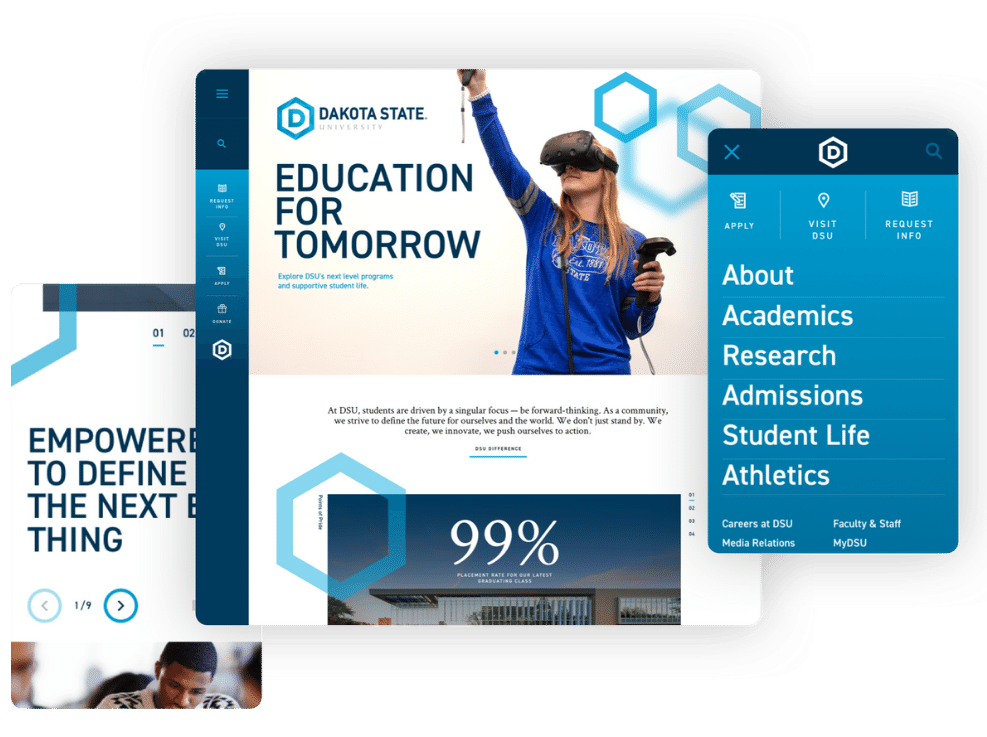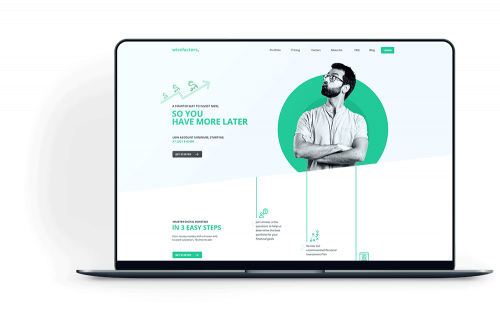The Duty of Responsive Website Design in Today's Mobile Market
The Duty of Responsive Website Design in Today's Mobile Market
Blog Article
Maximize Individual Experience With Innovative Site Design Solutions
In today's digital landscape, making best use of customer experience with ingenious website style services is vital for companies seeking to engage their audience successfully. By welcoming user-centric style principles, companies can create user interfaces that not only satisfy user requirements but likewise improve overall fulfillment. Secret factors such as receptive layouts, instinctive navigation, and efficient aesthetic hierarchy play an essential duty in this process. However, the assimilation of interactive components can better elevate the user trip, motivating a reevaluation of traditional style methods. What techniques might arise when we take into consideration the progressing expectations of customers?
Understanding User-Centric Design

To execute user-centric design properly, it is important to perform complete study, including individual meetings, surveys, and usability testing. These research techniques offer valuable information that notifies design choices, ensuring that the end product aligns with user expectations. In addition, producing customer personas can assist designers understand and envision with the end-users, guiding the layout procedure toward a lot more appropriate options.
Additionally, iterative layout is a crucial component of user-centric techniques. By continually testing and refining designs based on customer feedback, developers can recognize discomfort factors and locations of renovation, resulting in a much more refined end product. Eventually, user-centric layout is not just a phase in the growth procedure yet a continuous dedication to focusing on individual demands, causing more efficient and interesting electronic experiences.
Importance of Responsive Layouts
As electronic communications progressively take place across a selection of tools, the importance of responsive layouts can not be overstated. A receptive format guarantees that a website adjusts flawlessly to different display dimensions, from desktop screens to smart devices. This adaptability is vital in today's multi-device landscape, where individuals anticipate a appealing and constant experience regardless of just how they access material.
The main benefit of responsive design is boosted individual fulfillment. When a website is optimized for all gadgets, it reduces the requirement for zooming, scrolling, or horizontal navigation, which can lead and frustrate individuals to greater bounce prices. Additionally, search engines like Google focus on mobile-friendly internet sites in their ranking formulas, making responsive formats important for efficient search engine optimization techniques.
Instead of managing different variations of a web site for various devices, a solitary, fluid layout can be modified, conserving time and sources. Inevitably, spending in responsive layouts is not just a fad; it is a fundamental principle of modern-day internet design that considerably improves customer experience and engagement.
Enhancing Navigation and Availability
Effective navigation and ease of access are pivotal parts of a well-designed web site, considerably influencing individual engagement and contentment. A straightforward navigating framework enables visitors to discover details quickly and without effort, minimizing aggravation and raising the likelihood of repeat check outs. Carrying out clear, descriptive labels for navigation links, together with a logical power structure, can direct customers flawlessly with the web site.
Access is just as vital, ensuring that all customers, no matter their handicaps or abilities, can communicate with the website successfully. This can be attained via the usage of proper shade contrasts, message dimensions, and alt text for pictures, which together improve the experience for visually impaired customers. In addition, incorporating key-board navigating and display reader compatibility broadens access for customers with varied requirements.
Normal use screening can offer valuable insights into navigating performance and availability concerns. By gathering comments from real users, developers can recognize discomfort points and make enlightened modifications. Eventually, focusing on navigation and availability not only promotes inclusivity yet additionally grows a positive user experience, enhancing the brand name's commitment to top quality and user treatment in a significantly electronic landscape.
Utilizing Visual Power Structure Effectively
Aesthetic pecking order offers as a leading framework in internet site layout, routing users' interest to the most vital elements on a page. By purposefully arranging aesthetic elements such as spacing, shade, and typography, designers can develop a clear pathway for individuals to adhere to. This structure not just enhances customer experience but likewise improves material comprehension.
One efficient means to establish aesthetic power structure is through using dimension and range. Bigger elements naturally draw in more attention, making headings and essential visuals prominent. Matching this method with contrasting shades can even more set apart main web content from second details, making certain that important information attracts attention.
In addition, the plan of components plays a crucial role in leading individual interaction. Utilizing a grid layout can produce a cohesive flow, while whitespace helps to different web content and lower cognitive check tons - Website Design. This willful spacing allows customers to refine info more conveniently, causing boosted engagement
Last but not least, making use of regular layout patterns helps reinforce visual hierarchy, providing users with acquainted hints as they navigate the website. By focusing on these principles, developers can properly take full advantage of customer experience, making sure that visitors can effortlessly locate the info they seek.
Incorporating Interactive Elements
The unification of interactive aspects right into site layout can significantly boost individual interaction and overall experience. Interactive attributes such as tests, sliders, and surveys not just astound individuals yet also promote active participation, making the surfing experience much more remarkable. By motivating users to interact, internet sites can effectively maintain interest and reduce bounce prices.
Moreover, integrating dynamic material like computer animations and hover impacts includes an attractive layer of interactivity. These elements can direct users intuitively via the site, highlighting important details and phones call to action. For example, computer animated switches can attract attention and improve click-through rates.
In addition, personalization with interactive tools such as chatbots or recommendation engines permits internet original site sites to satisfy visite site specific preferences, promoting a feeling of link. This tailored technique not just boosts customer contentment but also encourages repeat check outs.
Integrating analytics tools to track interactions gives useful understandings right into user habits, enabling continuous enhancement of the interactive aspects. Inevitably, a properly designed interactive experience transforms an easy surfing session into an appealing journey, resulting in raised individual complete satisfaction and commitment. Integrating interactive elements is essential for making best use of user experience in modern-day web site design.
Verdict

In today's electronic landscape, taking full advantage of user experience through ingenious internet site style solutions is essential for companies looking for to engage their audience properly. Ultimately, focusing on navigation and ease of access not just cultivates inclusivity however likewise grows a favorable user experience, reinforcing the brand's dedication to high quality and customer care in a significantly digital landscape.

In final thought, taking full advantage of individual experience via cutting-edge internet site style solutions necessitates a commitment to user-centric principles. Website Design.
Report this page